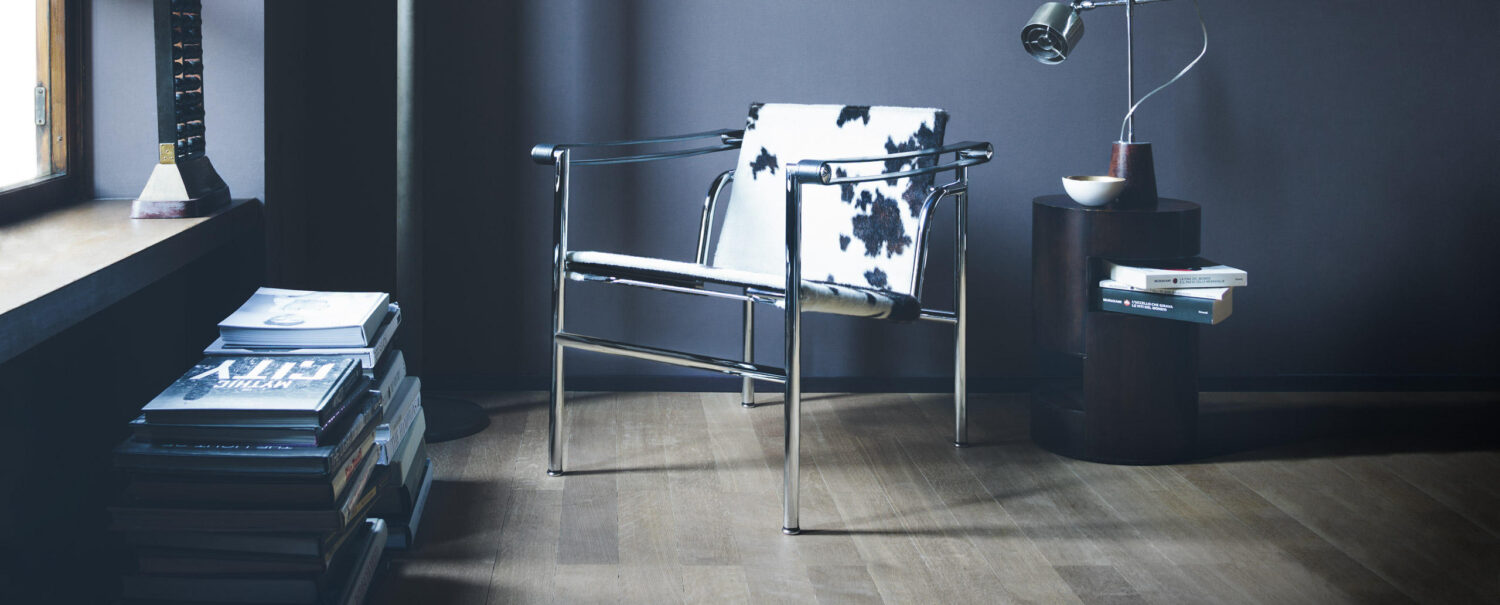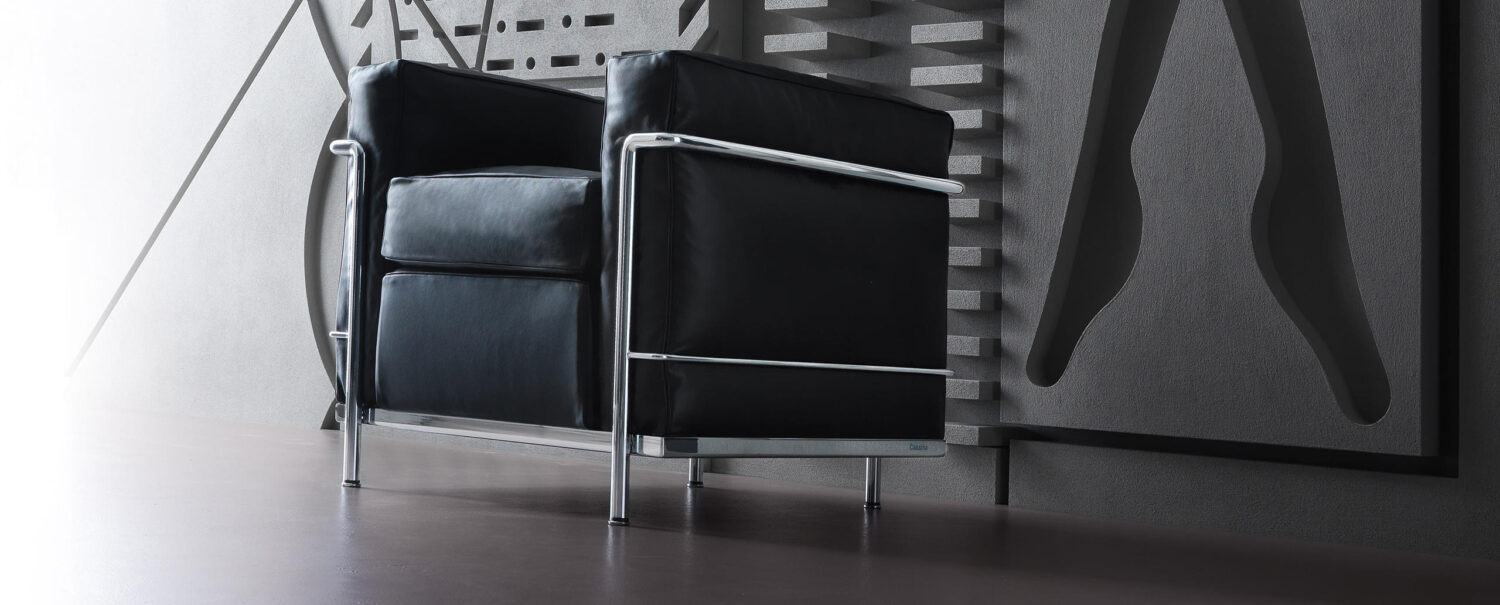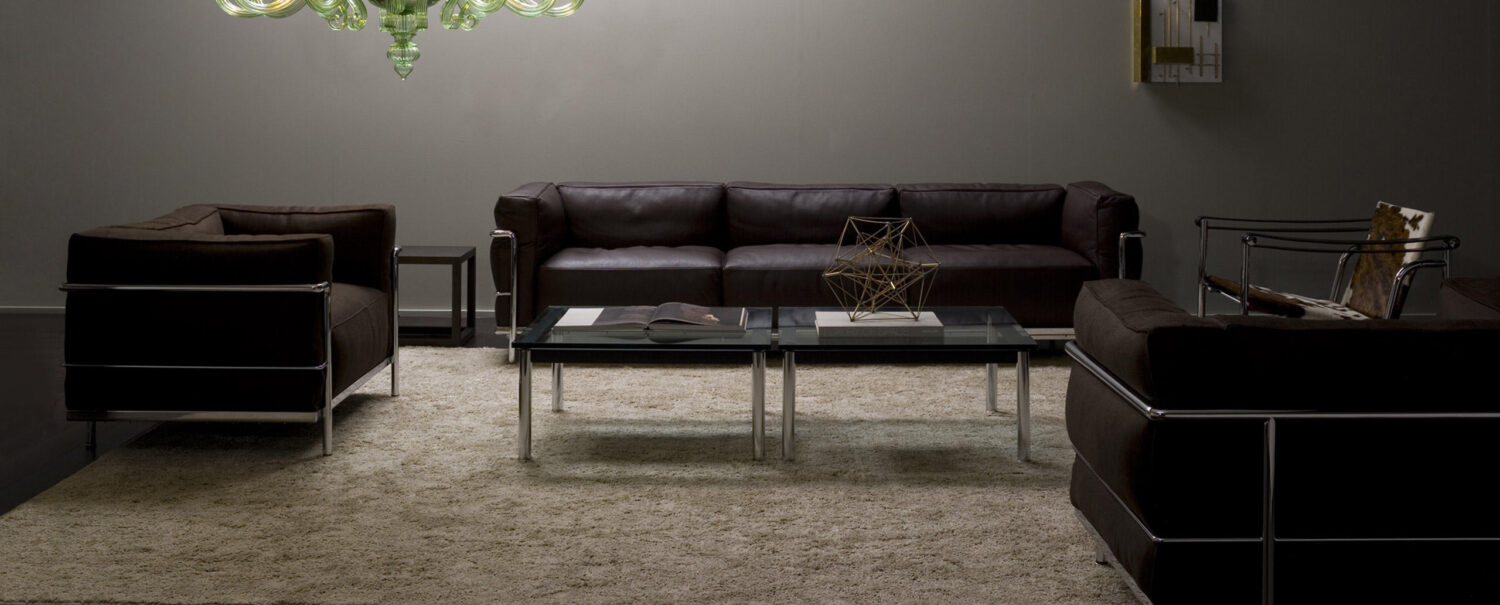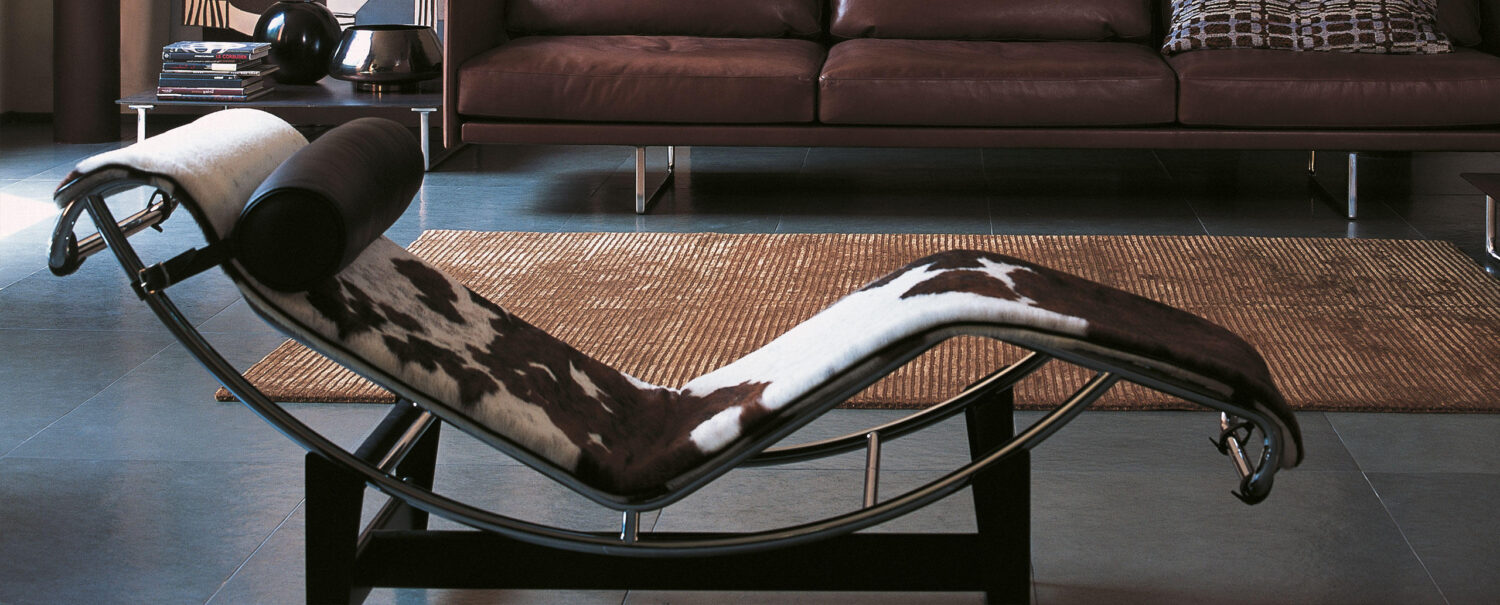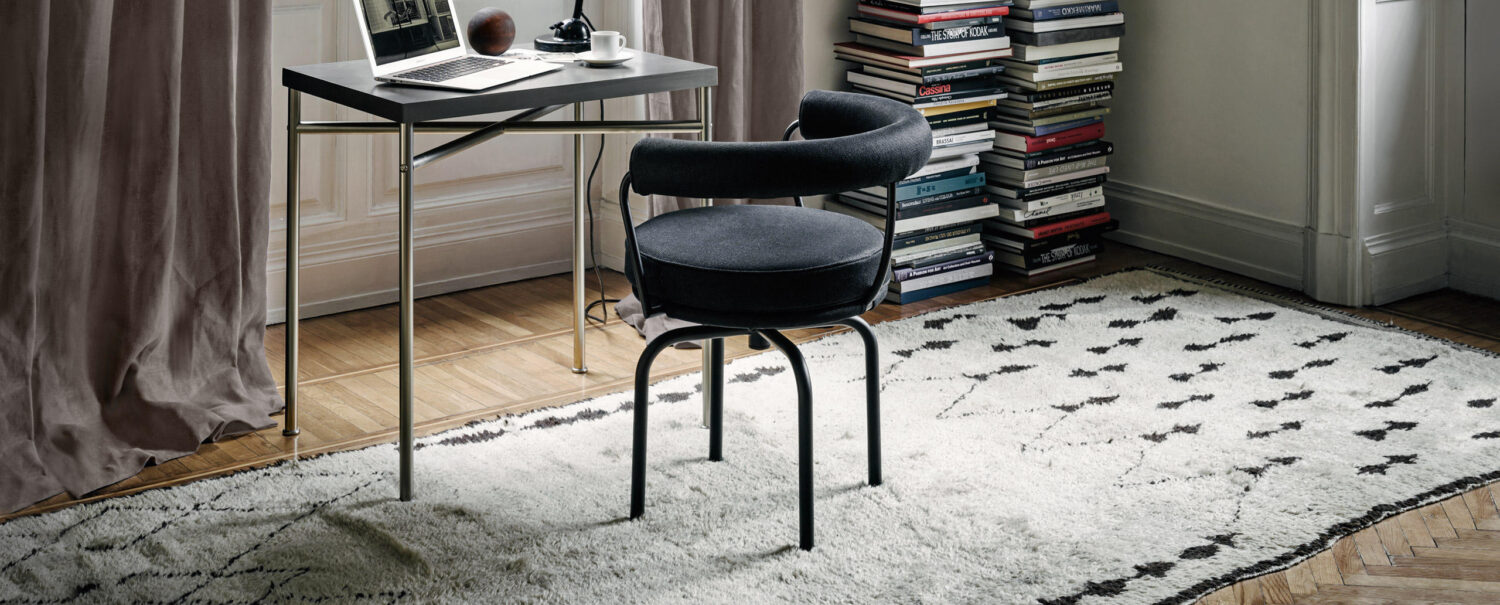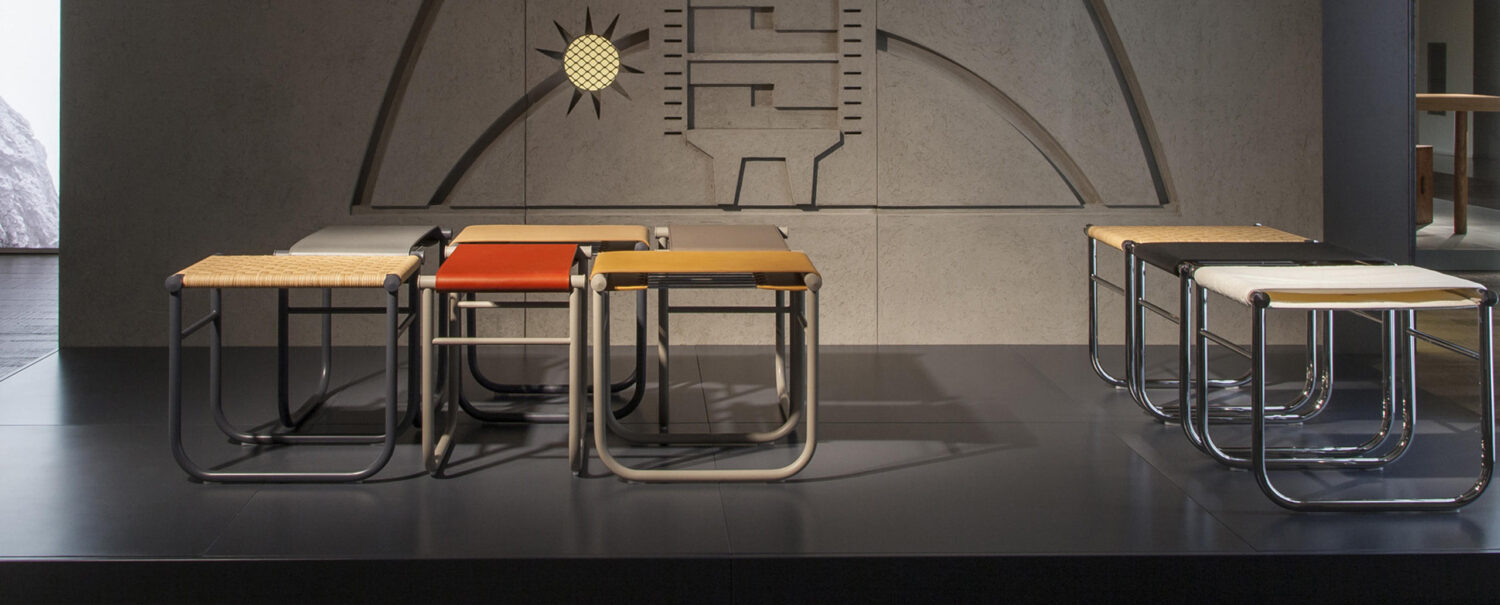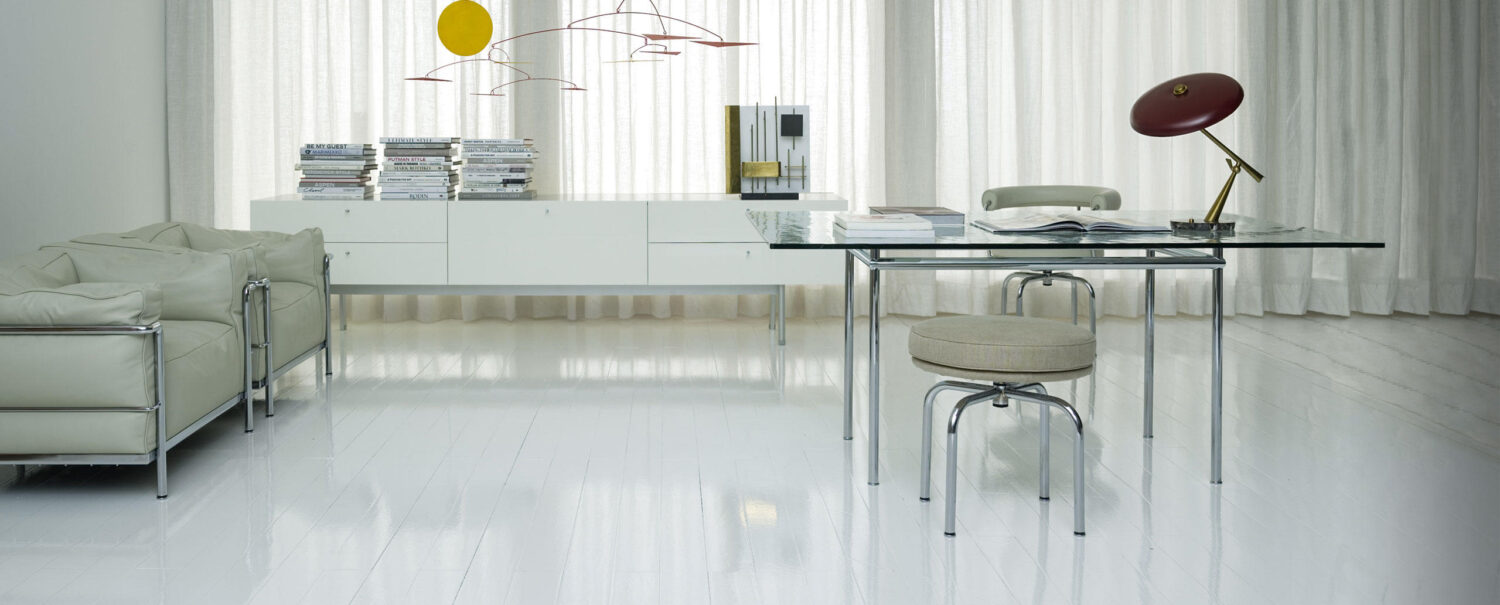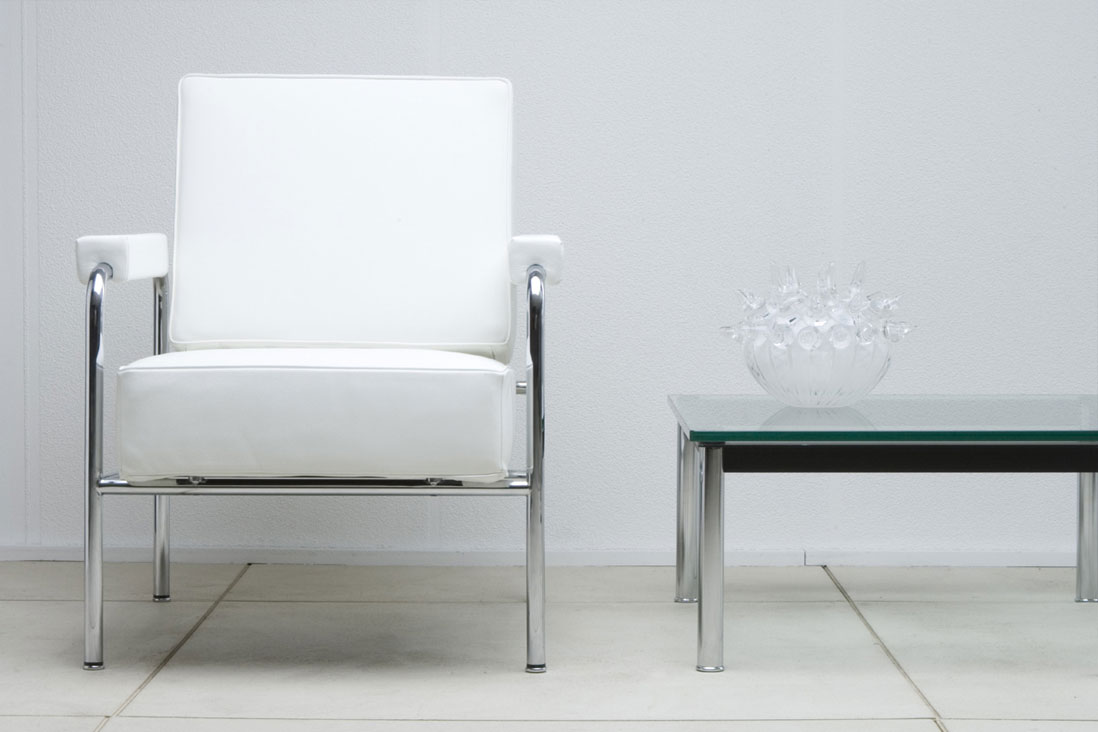LC 1
Early in his career his work met with some resistance owing to its alleged «revolutionary» nature and the radical look it acquired from its «purist» experiments; in time , however, it won the recognition it deserved and it is still widely admired.
LC 2
His message is still being assimilated by an ever increasing number of people in the profession, but his far-out avant-garde attitudes should be interpreted with due consideration for the use of rational systems in his planning method, evidenced by extremely simple modules and formes based on the functional logic.
LC 3
«Functionalism tending not so much to an exaltation of the mechanical function at the expense of the symbolic, as to the rejection of symbol that he now considers outmoded and insignificant and the restoration of the pratical function as a symbol of new values»
LC 4
LC 5
Much the same commitment will be found in the furniture of the Equipement intérieur de l’habitation (tables, chairs, armchairs, sofas) designed for the Salon d’Automne, 1928, with Pierre Jeanneret and Charlotte Perriand and “Casiers Standard”, system of container units designed for the Pavillon of the Esprit Nouveau, 1925, with Pierre Jeanneret.
LC 6
Cassina reproposes this furniture considered “up-to-date”; its clear and essential “form” is highly adaptable to change in time and in environment, constantly providing new significance.
LC 7
LC 8
LC 9
LC 10
LC 11
LC 12
LC 13


